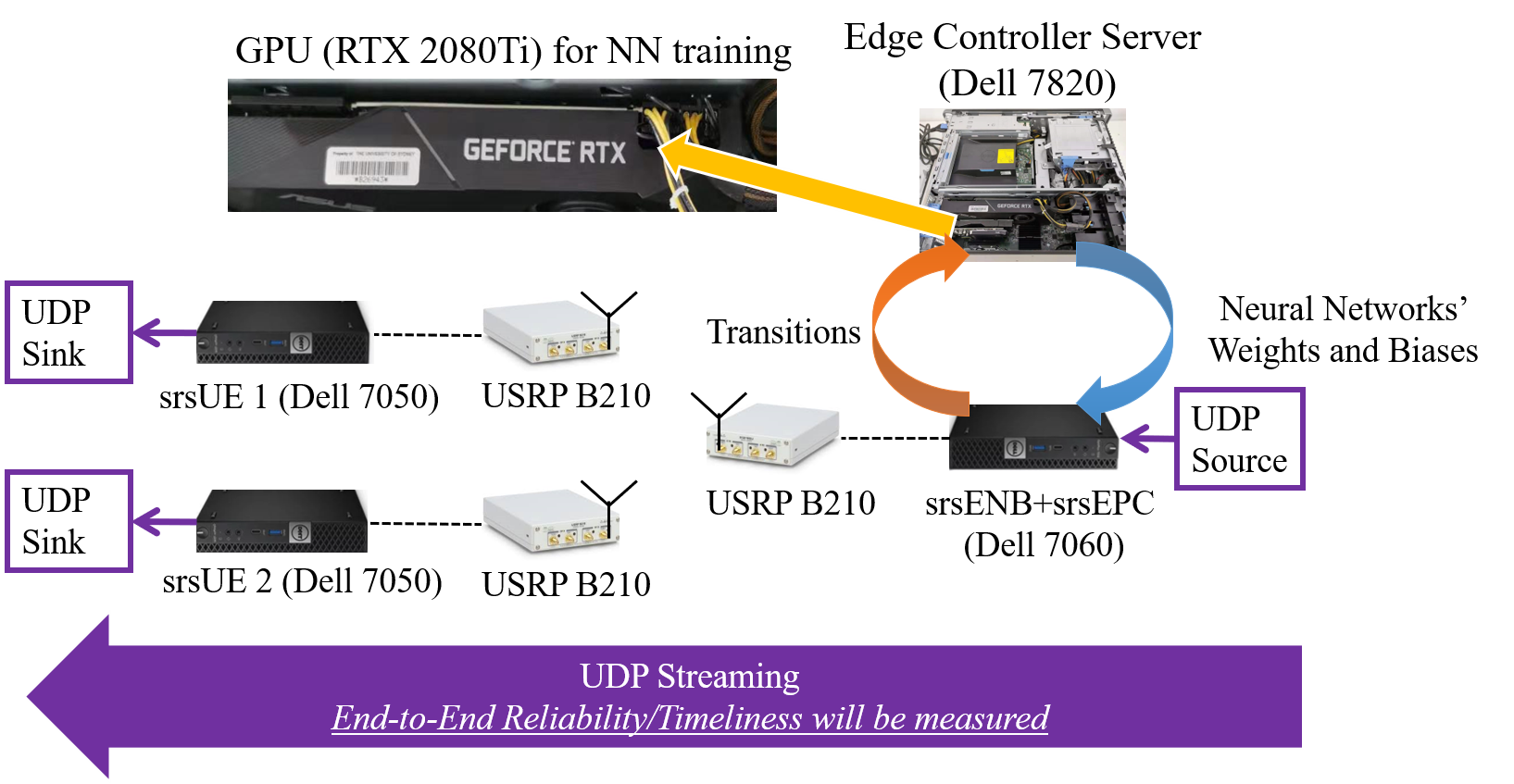Author: Zhouyou Gu (zhouyou.gu@sydney.edu.au);
Supervisors: Wibowo Hardjawana (wibowo.hardjawana@sydney.edu.au); Branka Vucetic (branka.vucetic@sydney.edu.au)
Collaborators: Changyang She from The University of Sydney; Simon Lumb, David McKechnie, and Todd Essery from Telstra Corporation Ltd.
This project is developed at Centre for IoT and Telecommunications at The University of Sydney, under a project directly funded by Telstra Corporation Ltd., titled ”Development of an Open Programmable Scheduler for LTE Networks”, from 2018 to 2019. The reference to our paper :
@ARTICLE{gu2021knowledge, author={Gu, Zhouyou and She, Changyang and Hardjawana, Wibowo and Lumb, Simon and McKechnie, David and Essery, Todd and Vucetic, Branka}, journal={IEEE Journal on Selected Areas in Communications}, title={Knowledge-Assisted Deep Reinforcement Learning in {5G} Scheduler Design: From Theoretical Framework to Implementation}, year={2021}, volume={39}, number={7}, pages={2014-2028}, doi={10.1109/JSAC.2021.3078498}}
The following is a table of version-sensitive packages used in this project. Note that packages with different versions may not be functional for this project. Please install the right version based on instructions in their corresponding websites.
| Version-sensitive packages | Version |
|---|---|
| Ubuntu | 18.04.2 |
| Python | 3.6.9 |
| Cmake | 3.10.2 |
| Protobuf | 3.0.0 |
| Pytorch | 1.8.0+cu111 |
| Libtorch | 1.8.0+cpu+cxx11-ABI |
| nvidia-driver (CUDA) | 450.102.04 (11.0) |
| srsLTE | c4bcd6e287fc67bf85fb82a41d1f8f2c901ed8d5 |
| UHD | UHD_3.14.1.1-release |
Install other Linux packages
sudo apt-get update
sudo apt-get install python3-pip net-tools linuxptp systemd-timesyncd ntp linux-lowlatency cmake build-essential libfftw3-dev libmbedtls-dev libboost-program-options-dev libconfig++-dev libsctp-dev libpcsclite-dev python3-pandas iperfInstall other Python packages
sudo pip3 install tensorboard paramiko matplotlib scipy future scp dashAn example of off-line training script is shown in controller_src/sim_sript_example/ka.py. To run this script, execute the following command under controller_src,
PYTHONPATH=./ python3 ./sim_sript_example/ka.pyThe above script creates a logging folder as controller_src/sim_sript_example/tb-data (for details, please check ka.py and other related codes). To see the training information, run the follows under controller_src/sim_sript_example/tb-data,
tensorboard --logdir ./ --bind_allThen, use a browser to open the Tensorboad web interface on the port that is shown in the outcome of the above command.
The reference setup of the equipment is shown in the following picture, where all computers are required to be configured with package dependency as listed in the previous section. Also, all computers need to have network connections with the edge controller server for experiments.
In the edge controller server, download the libtorch (at the version listed in package dependency) in edge_src by running
python3 install_libtorch.pyIn controller_src/edge_ctrl_src/edge_config.py, add the ssh access configurations of the computers, e.g., usernames/passwords/remote working directories. Switch the working directory in the edge controller server to controller_src and run
PYTHONPATH=./ python3 ./edge_ctrl_script/edge_upload_file.pywhich updates all the source codes to edge computers. Then, have a cup of coffee/tea. After the completion of uploading, run the follows in order to compile the source codes that are uploaded to the edge,
PYTHONPATH=./ python3 ./edge_ctrl_script/edge_compile.pyand have another cup of coffee/tea. After the compilation, run the demo web GUI as
PYTHONPATH=./ python3 ./edge_ctrl_script/ctrl_web_interface/app.pyOpen 0.0.0.0:8080 in the browser and click on the button from the top to the bottom to start the experiments: 1) PTP time synchronization of edge computers, 2) the NN training controller, 3) the srsLTE edge cellular network, 4) ping tests, 5) one-way latency tests in downlink. If you have configured every part correctly, the real-time measured latency will show up in plots at the bottom of web GUI as
The controller here uses pretrained neural networks for 2 users saved in controller_src/exp_script_example/example_nn.


